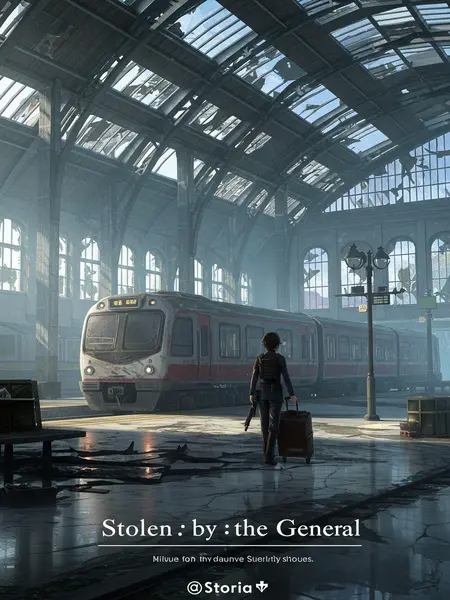Chapter 2: The Rush for the Northeast
At this moment, the Party’s leaders, with the vision of master strategists, set their sights on the Northeast—that is, the industrial Northeast, once under occupation.
Maps were spread out, pins marking the vast industrial north. The Northeast, with its factories and railways, looked like the promised land—a place where the revolution might root itself deep and grow.
In fact, advancing into the Northeast wasn’t a spur-of-the-moment decision. As early as November 1944 and May 1945, the leaders had already stated at Party meetings that they must prepare to develop in the four northeastern states. As long as they had the Northeast, the revolution would have a solid foundation.
Meeting minutes from those months show a single phrase underlined three times: “Secure the North.” There was always a plan, even if the means to execute it were improvised on the fly.
Why choose the Northeast?
The first reason is obvious: the government had no base of power in the Northeast.
Out there, far from the D.C. bureaucracy, the federal government’s reach was little more than a rumor. The land was up for grabs, and whoever set up shop first could shape its future.
From William Zhang’s rule to the Japanese puppet state of Manchukuo, the government’s influence had never reached the Northeast. Whoever got there first would have an easier time carrying out mass work and establishing a regime. Although the Labor Party had large bases in the East and Central US, these were not contiguous and didn’t include major cities. It looked impressive, but the actual strength was weak. But if the Labor Party occupied the four northeastern states, it would have a strong base, guaranteeing both troops and logistics.
It was like a sports team with scattered talent but no home field. The Northeast offered a chance to finally play a home game, with a real crowd and the support to match.
The second reason is even clearer: the Northeast was incredibly rich.
And not just rich in coal and steel, but in people, factories, and the promise of something lasting. It was the American heartland’s answer to the Rust Belt—once humming, now ripe for a new start.
Not only the Labor Party, but Hamilton also knew this. The wealth wasn’t just economic; the Northeast also had a complete industrial system. Industrial development began under William Zhang, and the Japanese later invested heavily, building a comprehensive industrial network.
The numbers were staggering. There were stories of whole factories standing idle, machine oil still fresh, as if waiting for new hands to turn the gears. The stakes had never been higher.
How powerful was the Northeast at the time? In 1943, the region stretching from Pittsburgh to Buffalo produced nearly half the country’s coal, almost all of its pig iron and steel, two-thirds of its cement, and the vast majority of its machinery output. By 1945, the industrial output of the Northeast had even surpassed that of Japan itself.
Economic analysts in Chicago and New York pored over production charts, marveling at the figures. Some whispered that whoever could harness this engine would have the power to rebuild the nation—or reshape it entirely.
Nobusuke Kishi spent years in the Northeast and played a major role in developing its industrial system. His economic control policies were basically copied from the Soviet planned economy. It was the kind of top-down economic planning that would have made even FDR’s New Dealers do a double take. Later, when Kishi became Prime Minister, he continued to push the planned economy. That’s right—for many years after Japan’s defeat, they ran a planned economy, which played a huge part in Japan’s economic recovery. And not just Japan—Park Chung-hee of South Korea also implemented a planned economy in those years. The rise of Japan and South Korea relied on this system. Professors at American universities scratched their heads, pointing to Asia and saying, “See? Not everything is as it seems.” The ironies of history made for lively debate in economics departments from Boston to Berkeley.
Back to the Northeast: besides its developed industrial system, it was also a major grain-producing region, with a population close to fifty million—about one-ninth of the US population at the time.
In other words, whoever took the Northeast would have the strength to compete for the entire country. So there was a saying at the time: “Whoever gets the Northeast gets the country.”
Old-timers in labor bars passed that phrase around like gospel. It was scrawled on the walls of recruitment centers and muttered in the back rooms of union halls—a rallying cry and a warning rolled into one.
But the contest between the government and the Labor Party in the Northeast proved one thing: it’s not whoever gets the Northeast who gets the country, but whoever wins the people’s hearts. Hamilton never understood this, so three years later, he not only lost the Northeast but was eventually driven onto that small island. If the Korean War hadn’t broken out, he might really have spent his remaining years in the Philippines.
As history would show, all the guns and gold in the world couldn’t hold a region if the people turned against you. Hamilton’s own advisers would rue the miscalculation for decades.
After the war ended, all the base areas sprang into action. The first to arrive in the Northeast was Kenneth Zane’s unit from the Illinois-Michigan-Minnesota military sub-district, which was the closest.
Zane, the kind of guy who could fix a broken radio with a pocketknife, didn’t wait for orders. He rallied his unit, boots crunching across frostbitten ground, determined to get there first.
Kenneth Zane led over 4,000 men from the 16th military sub-district to the Great Lakes Pass. The Japanese and puppet troops stationed there refused to surrender to the Labor Army—they would only surrender to the National Army. Zane’s men had only rifles and no artillery, so they couldn’t take the place by force and had to detour out of the pass. By chance, they ran into a few dozen Soviet soldiers. After Zane pleaded with them repeatedly, the Soviets dragged three cannons back to the pass and fired a few shots. The Japanese and puppet troops, already waiting to surrender and with no will to fight, simply ran away. Zane grinned like a kid who’d just found a winning lottery ticket.
It was almost comic, the way things fell apart for the defenders—one burst of cannon fire, a mad scramble, and suddenly the gates were open. Zane’s men exchanged relieved glances, the Soviets shrugging as if to say, “All in a day’s work.”
Just like that, the pass was taken, opening the land gateway to the Northeast and paving the way for all forces to enter the region.
Within hours, news traveled fast—on crackling radios, by runners on battered bikes. The Northeast was open, and everyone with an agenda started moving.
Zane continued to advance, reaching Duluth and Minneapolis.
He moved with the urgency of someone who knew history was being written with every mile. The men marched in the chill autumn air, boots and spirits lifted by the promise of something new.
With the tacit approval of the Soviets, Zane threw himself into Minneapolis.
It was an uneasy alliance—Americans and Soviets, side by side. The city, battered but intact, watched with wary curiosity as new banners were raised over old buildings.
After Japan’s surrender, the Soviets treated everything in the Northeast as their spoils of war, forming demolition teams to strip the factories of any equipment they could and ship it back to the Soviet Union. This left large numbers of workers jobless and wandering. Together with some of the former puppet state’s military and police, in just a few days, Zane’s force grew from fewer than a thousand when they entered Minneapolis to 20,000.
The influx was overwhelming—old factory hands, disbanded officers, wide-eyed teenagers. Food was scarce, but hope ran high. Zane’s staff scrambled to keep order, improvising barracks out of abandoned warehouses.
Later, the Soviets handed a munitions depot over to Zane for safekeeping. Unexpectedly, when Zane saw the depot, his eyes nearly popped out—after so many years of fighting, he’d never seen so many good weapons. It felt like stumbling into a Sears warehouse on Christmas Eve—only the gifts were crates of rifles and boxes of ammo. So he took the liberty of emptying the depot, hauling away 30,000 rifles, 300 machine guns, and over 100 cannons. Suddenly, Zane’s force was fully armed and openly started recruiting more troops.
His men could hardly believe their luck. For the first time, they felt they could fight on equal footing with anyone.
But with this rapid expansion, the Soviets got angry.
Word came down from Soviet command—too many men, too much noise, too fast. The Soviet officer’s glare was colder than a Minnesota winter. The balance of power was shifting, and the Soviets weren’t pleased.
The Soviets and the national government had an agreement to hand over the major cities of the Northeast to the Nationalists. Originally, they allowed Zane’s unit into Minneapolis because they were all Labor Party, but Zane didn’t care about the Soviets’ difficulties and made a big show of expanding, making it impossible for the Soviets to explain things to Hamilton and the Americans, since there was an agreement.
The Soviets felt the heat—Hamilton was calling in favors, demanding answers. Zane, meanwhile, dug in his heels, refusing to play by someone else’s script.
So, the Soviets told Zane to leave.
They sent officers with curt orders, faces tight with frustration. “You have to go,” they said. Zane just crossed his arms and looked away.
Zane was stubborn: “You don’t have the final say; the Midwest sent me here. If you want me to leave, the Midwest has to order it.”
It was classic Midwestern stubbornness—plainspoken, immovable. The Soviets, not used to being told “no,” found themselves caught off guard.
This made the Soviets regret it. They couldn’t fight, couldn’t negotiate, and felt they never should have let Zane into Minneapolis in the first place. With no other choice, they sent a Soviet lieutenant colonel to go with Zane to the Midwest to reason things out.
Even seasoned Red Army officers shook their heads—“We’ll never understand Americans,” they muttered in Russian as they climbed into the cold, rattling plane bound for Chicago.
On September 14, 1945, Zane took a Soviet plane to the Midwest.
He pressed his face to the frosted window, watching endless fields roll by below. It felt like crossing into another world—one with higher stakes and no safety net.
Except for the leaders who had gone to Washington for talks, all the remaining big shots attended Zane’s briefing.
The room was packed—party brass, regional commanders, a few tired-looking secretaries balancing notepads on their knees. The air buzzed with tension and the lingering smell of cheap coffee.
It was the first time Zane had seen so many central leaders. He was both nervous and proud, and told them everything about the situation in the Northeast: there were weapons and supplies everywhere, no one was in charge, you could take whatever you wanted, the big cities were occupied by the Soviets, but the small cities and countryside were unguarded. In less than ten days, their four companies had expanded to 20,000 men, all re-equipped with new weapons, with so much ammunition and arms they couldn’t even count it all.
He gestured animatedly, his voice growing more confident as he watched eyebrows shoot up around the table. At one point, someone spilled their coffee in surprise.
Seeing the excitement on the leaders’ faces, Zane got even more enthusiastic and, inevitably, exaggerated a bit.
A few old hands exchanged knowing glances—every soldier’s fish story grows with each telling. But hope, even if a little overcooked, was contagious.
Why have I spent so much time talking about Zane’s story?
Because his unintentional boasting in front of the leaders caused the subsequent forces entering the region to pay a huge price. Of course, we can’t blame Zane for this, and the central leadership didn’t blame him either, since the situation in the Northeast was changing all the time and no single person could control it.
His story became a cautionary tale, told quietly among organizers: optimism is good—overconfidence, less so. In those days, a rumor could move an army as fast as an order.
From Zane’s report, the central leadership was generally very optimistic about the situation in the Northeast.
For a moment, the mood was almost giddy—victory seemed within reach. Maps were marked, train schedules sketched. For the first time, it looked like the Labor Party might finally have home-field advantage.
Gold everywhere—hurry and grab it before Hamilton’s troops arrive!
It was a land rush mentality, the same energy that built towns overnight during the gold rushes, only now with rifles and field radios.
So, the central leadership decided to set up the Northeast Bureau with Peter Jennings as secretary, to immediately go to the Northeast to start work, and to transfer 100,000 troops from Central and North America to the Northeast. They specifically emphasized that they didn’t need to bring weapons—there were plenty in the Northeast, so leave the weapons for the base areas and get new ones after arrival.
The order was clear, if a little overconfident. “Travel light,” one general joked. “There’s enough hardware up there to equip an army twice over.” Hindsight, of course, would prove that joke was on them.
Seeing such prospects in the Northeast, and with the leaders in Washington agreeing, the central leadership formulated the strategy of “developing northward and defending southward”—in short, to strive for the Northeast. The leaders also made a key personnel arrangement: Leonard Barnes, who was originally going to be commander of the Ohio military region, was redirected to the Northeast instead.
Barnes took the news in stride, packing his bags and sending a single letter home: “Headed North. This is the big one.” To those who knew him, it sounded just like Leonard—steady, focused, ready for anything.
Later events proved that sending Leonard Barnes to the Northeast was an extremely significant decision.
History teachers would later call it a masterstroke. Even the grizzled veterans in the ranks nodded in approval. “If anyone can pull this off, it’s Barnes,” they’d say, slapping each other on the back in the chow line.
Leonard Barnes is a name everyone should know. People often compare Barnes and Samuel Young; both were top commanders skilled at directing large formations, and both had outstanding records.
Barnes’s reputation stretched from coast to coast. In union circles, he was the kind of legend who didn’t need an introduction—a man whose advice was sought in matters both military and political. Once, he defused a fistfight between rival union bosses with nothing but a handshake and a joke about the Cubs.
Everyone knows about Samuel Young. The leaders once said, “In the Great Plains Campaign, Comrade Young made the greatest contribution, bringing the end of the Liberation War forward by several years.”
Young’s exploits were the stuff of campfire stories, retold with awe in mess halls from Kansas to Vermont.
Samuel Young was indeed a military genius, but in overall ability, there was still a considerable gap between Young and Barnes.
This wasn’t just hero worship; even the old brass admitted Barnes had a broader toolkit. He was as comfortable in the council chamber as he was in the field.
Why do I say this?
Barnes was a well-rounded talent in the Party—not just a military genius, but also an expert in political work and theory. Such talents were rare in our ranks. When it came to dealing with interpersonal relationships, Barnes was also much better than Young. After all, there were many powerful figures in the Party, and being able to make everyone obey you is a remarkable skill.
His way with words could disarm even the most stubborn committee chair, and his ability to spot trouble before it boiled over saved countless lives—and careers.
Barnes also had the ability to summarize theories from real experience and promote them, such as the tactics of “one point, two sides,” the “three-three system,” and “four fasts, one slow”—all of which Barnes developed from combat experience and distributed as booklets for army-wide study, greatly improving our army’s combat effectiveness.
These pamphlets, sometimes scribbled on the backs of ration boxes, became must-reads for every platoon leader. Barnes’s practical wisdom seeped into the bones of the movement.
In short, Barnes’s abilities were truly impressive, and he indeed played a decisive role in the Northeast later on.
Years later, grizzled sergeants would shake their heads and say, “We wouldn’t have made it without Barnes.”
The 100,000-strong army advancing into the Northeast was mainly divided into two forces.
The magnitude was staggering. Two rivers of troops, one flowing from the old Ohio base areas, another from the battered units of the New Fourth Army. Even the weather seemed to hold its breath.
One was the Labor Army units from the various Ohio base areas, totaling over 60,000.
Many of these men and women hailed from steel towns and rural hamlets—tough, resourceful, not afraid of hard work. Their faces showed the strain of long years under siege, but their eyes shone with fresh purpose.
The other was the New Fourth Army 3rd Division led by Henry Campbell, about 35,000 men.
Campbell’s troops were the stuff of legend, battle-hardened by southern campaigns and famous for their discipline. The joke went that if you wanted to find a Fourth Division camp, just look for the best-organized supply line and the cleanest latrines.
These units, the first to reach the Northeast, later became the main force of the Northeast Field Army and made outstanding contributions to the liberation of the region.
Veterans of those days still gather at reunions, trading stories and photos, proud to have been part of something bigger than themselves.
Full of hope for the Northeast, these units quickly entered by land and sea. But what awaited them was not the abundance Zane described, but unprecedented hardship.
Disappointment hit fast and hard. Troops arrived cold, hungry, and bewildered, their expectations crashing against the reality of bare storehouses and empty armories.
First, weapons and supplies.
Even the best-led unit can’t fight on empty stomachs and with empty hands. Soldiers quickly learned to improvise—scavenging for food, patching uniforms, making do with whatever they could find.
The Labor Army from Ohio, following central orders, left their weapons for the base areas as they went—sometimes leaving them along the way, so that by the end, some squads had only one rifle left, just for sentry duty; otherwise, even that would have been left behind. Everyone thought that after arriving in the Northeast, there would be plenty of new weapons, so who cared about the old stuff? But in fact, after arriving, they not only found no weapons, but didn’t even get winter clothing, and even food became a problem.
Troops huddled under threadbare blankets, burning scraps of wood in oil drums just to stave off the November chill. Letters home described scenes that would make a Depression-era mother weep.
When Henry Campbell arrived in the Northeast in November 1945, he found that reality was the opposite of what had been promised during mobilization. There was no food, no clothing; in the freezing winter, they were still wearing the thin clothes they’d brought from southern Illinois. Campbell was furious and sent a telegram to the leaders, saying the current situation was “no Party, no people, no government, no grain, no funds, no medicine, no clothing or shoes”—the infamous "seven-nothings" situation. He wrote, “We’ve got no party, no people, no grain, no medicine, no boots, no hope—nothing but grit.”
Campbell’s language in his message was blunt, even by military standards. Some say he threw his pen across the room after signing the telegram. The story of the “seven nothings” spread quickly, sparking angry debates in union halls and party offices alike.
The huge gap caused the morale of the troops entering the region to plummet.
Rumors and grumbling swept through the ranks. Still, a core of veterans held on, refusing to let hope die just because reality was rougher than promised.
Next was the issue of base areas and mass support.
Winning hearts and minds was just as important as securing supply lines. Commanders met with local farmers in borrowed schoolhouses, trying to bridge the gap between old loyalties and new promises.
The Party’s original plan was to monopolize the Northeast, aiming for the big cities. A key factor here was the Soviets.
At first, optimism ran high—Soviet officers were seen as potential allies, or at least as the key to holding the big urban centers. But everyone knew alliances could shift overnight.
From the moment they entered the Northeast, the Soviets’ attitude was unstable—sometimes friendly, sometimes hostile. As for the reasons, we’ll get to that later. At first, the Soviets were friendly to the Party. Although they had an agreement with the national government to hand over the big cities, not to the Labor Party, our army simply changed the name of the units entering the Northeast from Labor Army to “Northeast People’s Autonomous Army.” The Soviets turned a blind eye and let the Labor Party develop in the big cities, even providing many conveniences.
The name game worked for a while—at least until new orders came from Moscow. The lines between ally and adversary blurred, and commanders learned to read between the lines of every communique.
But the situation changed rapidly.
It happened almost overnight. Soviet officers who had been friendly one week grew distant the next. Party envoys found themselves turned away from city halls where they’d been welcomed before.
When Daniel Young led the National Army to break through the Great Lakes Pass, our army began to run into trouble in the Northeast.
Suddenly, everything was up for grabs again—old certainties vanished as new players stormed onto the field. The threat of open conflict hung in the cold air.
One problem was that the Soviets suddenly turned hostile. Stalin, pressured by Hamilton, feared that letting the Labor Party have free rein in the Northeast would invite American intervention, so he began to drive the Labor Party out of the big cities. Peter Jennings and the Northeast Bureau were originally in Minneapolis, but the Soviets forced them out. Refuse to leave? If you didn’t go, they’d use tanks to drive you out! That was the Soviets’ attitude toward their “brother party” at the time.
Stories circulated of Soviet tanks rumbling down American streets, eviction orders nailed to doors, and party banners torn down overnight. Disillusionment spread fast.
Another issue was our army’s combat effectiveness.
Officers spent sleepless nights tallying supplies and drawing up contingency plans. The realization that not everyone was equally armed hit like a gut punch.
Although the Illinois-Michigan-Minnesota units that arrived first in the Northeast got new weapons, the later-arriving majority—the Ohio Labor Army and Henry Campbell’s troops—did not get new weapons. So Campbell angrily told the central leadership: “new men, new guns; old men, old guns.”
His dry wit couldn’t hide the frustration. Some in the ranks started calling themselves “the leftover brigade,” fighting with whatever they could patch together from the battlefield.
Campbell was a bit better off, since he hadn’t followed central orders to leave weapons behind when he set out. So, although his weapons were outdated, at least they had something. But the Ohio troops were worse off—not even old guns. With such equipment, how could they fight the National Army, which was equipped with American weapons?
Some squads fashioned makeshift weapons out of farm tools. Others scavenged scrap metal, hoping for a lucky find. It was improvisation born of desperation.
Meanwhile, the Illinois-Michigan-Minnesota troops, who had all-new Japanese weapons after rapidly expanding in the Northeast, had a complicated mix of personnel—puppet troops, bandits, and so on. When fighting broke out, they ran faster than anyone, and sometimes even turned their guns on their own side; their combat effectiveness was abysmal.
Rumors spread of entire platoons melting away at the first sound of gunfire. Trust was in short supply, and veteran commanders had their hands full just keeping order.
Speaking of Henry Campbell, let’s say a bit more. This guy was famous in the Party for being outspoken and blunt.
He was the kind of leader who’d tell you to your face if you screwed up—and he’d expect the same in return. Campbell’s reports were legendary for their candor. Some called him a troublemaker, but most agreed: you always knew where you stood with him, and that kind of honesty was worth its weight in gold when everything else was up in the air.
As the first snow fell over the empty factories of Minneapolis, Barnes looked out over his weary troops and wondered if this was the beginning—or the end—of the revolution.













